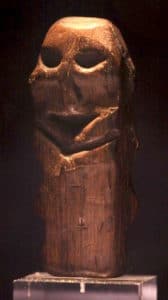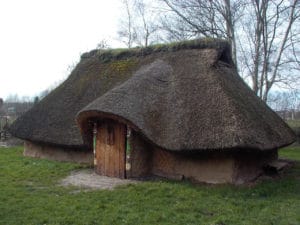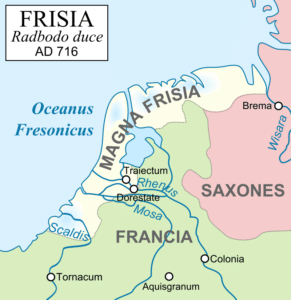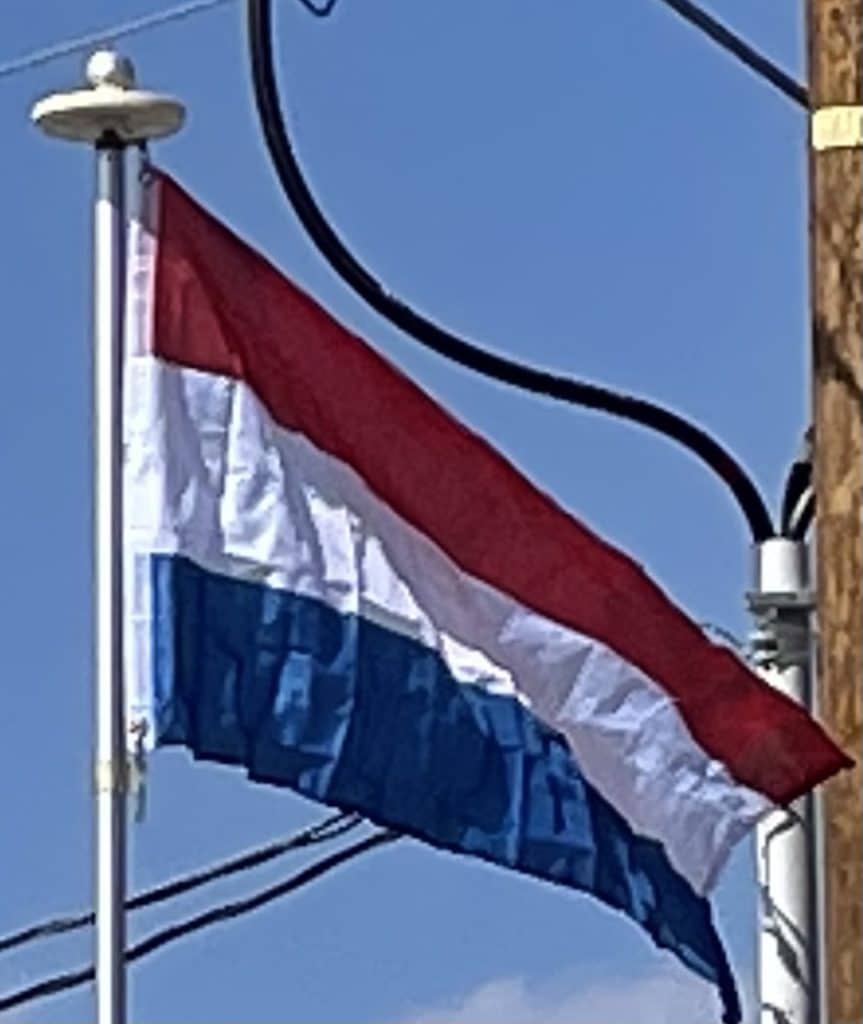
The area that is now the Netherlands would be home to numerous successive groups, tribes, and other hunter-gatherer cultures well into the Bronze Age.
Celts, Germanic Tribes and Romans (800 BC–410 AD):
Iron ore brought a measure of prosperity and was available throughout the country, including bog iron. Smiths travelled from settlement to settlement with bronze and iron, fabricating tools on demand. The King’s grave of Oss (700 BC) was found in a burial mound, the largest of its kind in western Europe and containing an iron sword with an inlay of gold and coral.
The deteriorating climate in Scandinavia around 850 BC further deteriorated around 650 BC and might have triggered migration of Germanic tribes from the North. By the time this migration was complete, around 250 BC, a few general cultural and linguistic groups had emerged.

During the Gallic Wars, the area south and west of the Rhine was conquered by Roman forces under Julius Caesar from 57 BC to 53 BC. Caesar describes two main Celtic tribes living in what is now the southern Netherlands: the Menapii and the Eburones. The Rhine became fixed as Rome’s northern frontier around 12 AD.
Early Middle Ages (411–1000):
After Roman government in the area collapsed, the Franks expanded their territories in numerous kingdoms. By the 490s, Clovis I had conquered and united all these territories in the southern Netherlands in one Frankish kingdom, and from there continued his conquests into Gaul.
To the north of the Franks, climatic conditions improved, and during the Migration Period Saxons, the closely related Angles, Jutes and Frisii settled the coastal land. By the seventh century a Frisian Kingdom (650–734) under King Aldegisel and King Redbad emerged with Utrecht as its center of power, while Dorestad was a flourishing trading place.

In 734, at the Battle of the Boarn, the Frisians were defeated by the Franks after a series of wars. With the approval of the Franks, the Anglo-Saxon missionary Willibrord converted the Frisian people to Christianity.
The Frankish Carolingian empire modeled itself after the Roman Empire and controlled much of Western Europe. However, as of 843, it was divided into three parts—East, Middle, and West Francia. Most of present-day Netherlands became part of Middle Francia, which was a weak kingdom and subject of numerous partitions and annexation attempts by its stronger neighbors.
High Middle Ages (1000–1384):
Around 1000 AD, due to several agricultural developments, the economy started to develop at a fast pace, and the higher productivity allowed workers to farm more land or to become tradesmen. Towns grew around monasteries and castles, and a mercantile middle class began to develop in these urban areas, especially in Flanders and later also Brabant. Wealthy cities started to buy certain privileges for themselves from the sovereign. In practice, this meant that Bruges and Antwerp became quasi-independent republics in their own right and would later develop into some of the most important cities and ports in Europe.
